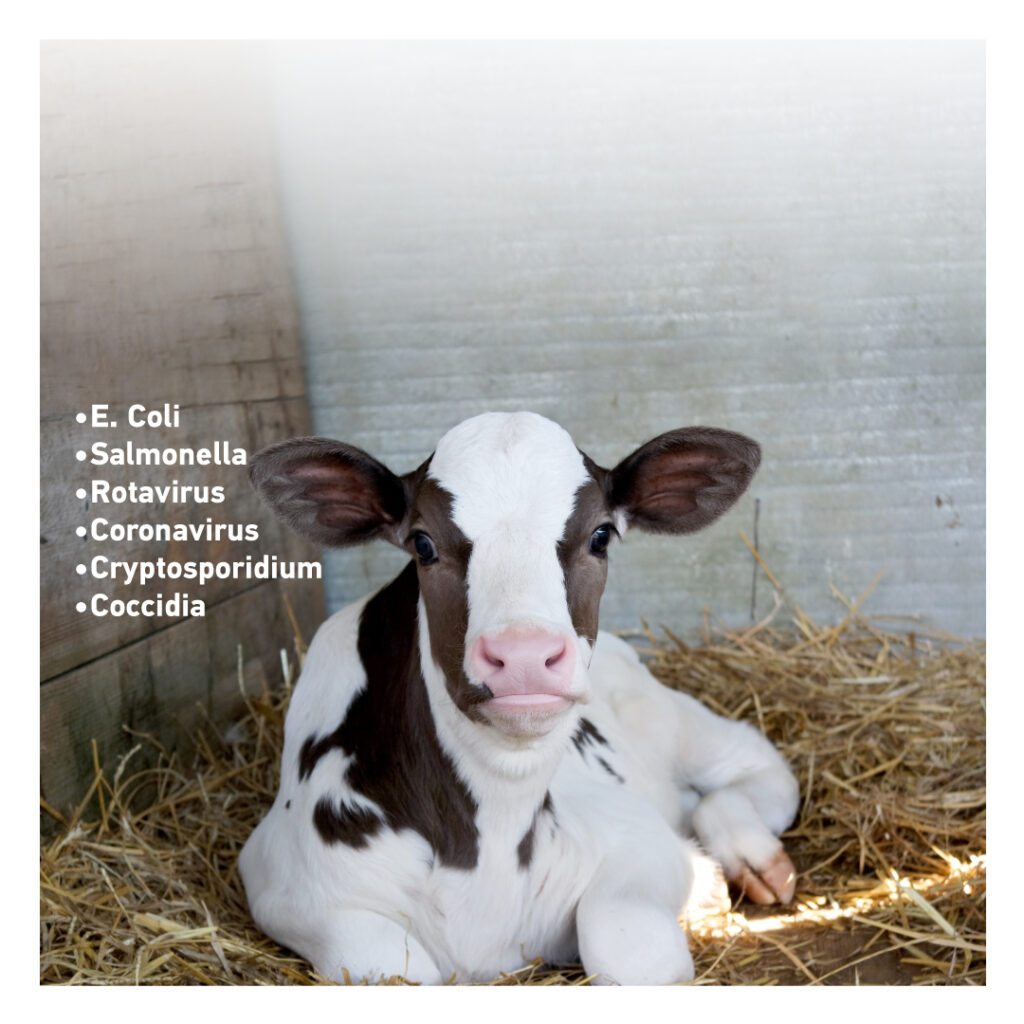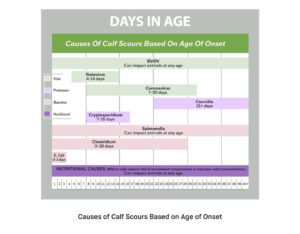Calf diarrhea, also known as scours, is a common and potentially fatal disease affecting young calves around the world. Characterized by the passing of watery or loose stools, calf diarrhea (scours) can cause dehydration, malnutrition, and even death. Due to its association with significant mortality rates, decreased growth rates, and expensive treatments, calf diarrhea (scours) also poses a major economic burden on the cattle industry. Thus, getting well-informed on the causes, symptoms, prevention, and diagnosis of cattle diarrhea (scours) is essential for the well-being of calves and the facilitation of economic sustainability in cattle farms. Based on the principle of antigen detection or antibody detection, the calf diarrhea (scours) rapid test kit is an efficient, convenient, affordable, and highly accurate device designed to assist in the diagnosis of calf diarrhea (scours). Read along to learn more about calf diarrhea (scours), its causes, symptoms, prevention, and diagnosis with the Calf Diarrhea (Scours) Rapid Test Kit.
What is Calf Diarrhea (Scours)?
Calf diarrhea (scours) is a multifactorial disease that can be caused by various bacterial, viral, and parasitic agents. Bacterial calf diarrhea (scours) is most often caused by infections with Escherichia coli (E. coli), Salmonella, and Clostridium perfringens. Viral calf diarrhea (scours), on the other hand, is usually caused by bovine coronavirus, rotavirus, and bovine viral diarrhea virus. Finally, parasitic calf diarrhea is often caused by protozoa and nematode species such as Cryptosporidium parvum and Giardia lamblia. While calf diarrhea (scours) may be caused by a wide array of pathogens, the risk of infection increases with poor sanitation practices, poor colostrum management, overcrowding, poor ventilation, and malnutrition. These factors can weaken the calf’s immune system, expose the herd to various infectious agents, and increase the risk of transmission. Together, these factors can lead to outbreaks of calf diarrhea (scours).
What are the Symptoms of Calf Diarrhea (Scours)?
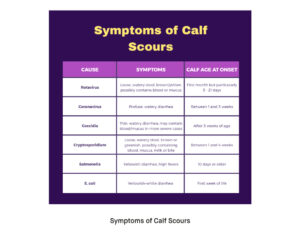
Although the range and severity of the symptoms of calf diarrhea (scours) may vary depending on various factors such as host health, host age, and the causative agent, calf diarrhea (scours) most often presents with loose or watery stools, foul-smelling stools, dehydration, lethargy, lack of appetite, unexplained weight loss, sunken eyes, along with a dry mouth and nose. Possible complications associated with calf diarrhea (scours) include severe dehydration, electrolyte imbalances, and metabolic acidosis. As dehydration can cause shock and result in the death of the infected animal, symptoms such as sunken eyes, dry mouth/nose, and decreased skin turgor should be watched out for. If you observe these symptoms, it is recommended to test the suspected animals as soon as possible to prevent further transmission and initiate proper treatment.
How can Calf Diarrhea (Scours) be prevented?
Factors such as poor sanitation practices, poor colostrum management, overcrowding, poor ventilation, and malnutrition increase both the risk of infection with and the susceptibility of the herd against various pathogens that cause calf diarrhea (scours). Adequate sanitation practices concerning both calving areas and equipment, sufficient ventilation, management of overcrowding, and an adequate supply of clean water can help prevent the spread of these infectious agents. Good colostrum management that ensures adequate colostrum intake within the first few hours of life and the facilitation of adequate nutrition can help support the calf’s immune system against these infections. Finally, vaccination programs can offer significant levels of protection against infection and disease by the common causative agents of calf diarrhea (scours).
How is the Calf Diarrhea (Scours) Rapid Test Kit performed?
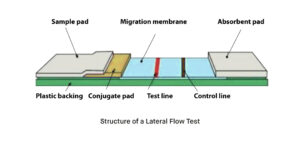
Coming in a lateral flow test format, the calf diarrhea (scours) rapid test kit is a chromatographic immunoassay for the detection of antigens or antibodies specific to particular pathogens in fecal samples to assist in the determination of the cause of calf diarrhea (scours). The test requires the collection of a fresh fecal sample into a clean container. If the sample is in liquid form, a sufficient volume should be collected. Next, the collected sample is transferred into the sample tube and mixed with the solution inside until the liquid is homogenized well. Then, the strip tube or test cassette is removed from its sealed pouch.
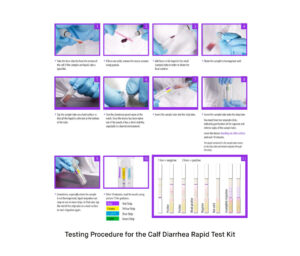
If the device comes in the form of a strip tube, such as the one illustrated below, the sample tube is inserted into the strip tube, and the device is left standing on a flat surface. If the device comes in the form of a test cassette, a sufficient volume of the processed sample is added to the assigned well(s) on the assay. The results should be read within the recommended time period specified in the instructions to ensure the validity of the obtained results. Following the specified reaction time, the presence of the test line (T) indicates the presence of antibodies or antigens for a particular pathogen, whereas the presence of the control line (C) indicates that the test is functioning correctly. Regardless of the presence of the test line (T), the results are considered invalid if the control line (C) is absent after the specified reaction time. In this case, the procedure should be repeated with a new test kit.
